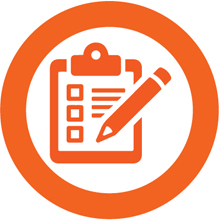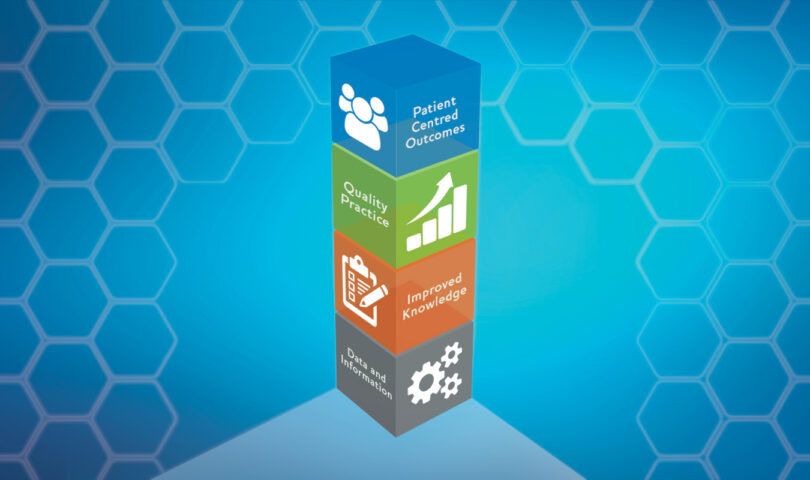By Stuart Foxman
Late last year, the College identified about 100 community pharmacy ambassador sites to be the first to participate in OCP’s new mandatory Medication Safety Program, providing beneficial feedback to inform the program’s development. These sites have been working with the College and its program partner, Pharmapod, to train staff and onboard them to the incident recording platform and other program components and to provide the College with qualitative feedback as it prepares for a full province-wide roll out later this year.
At MacTavish Pharmacy in Dresden, Ontario, halfway between London and Windsor, pharmacist Randy Luckham knows the people who visit his pharmacy. That’s what happens when you’re in a community of about 2,700. Luckham bought the pharmacy 25 years ago, but it has been there for over 100 years. He feels like a custodian of a long tradition of care.
For Luckham, only one mission matters. We’ve always stressed a patients-first philosophy, with accuracy in the pharmacy, he says.
That’s one reason why he jumped at the opportunity to be an ambassador for the College’s new Medication Safety Program. Luckham’s pharmacy was one of the ambassador sites that have had the opportunity to participate in the program before the College rolls it out to the province’s 4,300+ community pharmacies.
The program brings structure and clarity around the College’s expectations regarding the handling of medication incidents, including near misses, and how lessons learned from such incidents can be used to improve the safety and quality of pharmacy care. Under the program, medication incidents will now be anonymously reported using a standardized process and tools, including Pharmapod’s incident recording platform, with the aim of promoting a culture of continuous quality improvement within individual pharmacies.
The data gleaned from reported incidents across the province will be aggregated and used to identify overall areas of risk at a system level, to share learnings related to the causes of these incidents and subsequent preventative and quality improvement actions taken and to provide appropriate guidance to all pharmacy professionals.
It gives us another tool for learning, says Luckham. There’s a big opportunity in information analysis. Individual pharmacies don’t make that many errors. But when you add them together you can see patterns that we can all learn from.
PREPARING FOR THE ROLLOUT
Over the past several months the College has been working to ensure all of the program components are fully established by late 2018. At that time, the full roll out to all of Ontario’s community pharmacies will begin, with onboarding to program components and Pharmapod’s recording platform occurring in phases. Roll out of the program is expected to be completed by Spring 2019.
Luckham’s pharmacy and the other pharmacy ambassadors are playing a critical role in the success of the program by testing the incident recording platform and implementing the other equally important components of the program. He sees this as a chance to both share experiences with the College and to get a head start on what he sees as a valuable patient safety program one that ultimately will be the largest of its kind in the country once fully implemented.
I think it is our responsibility to embrace change, Luckham says. We can’t just sit back if we can analyze patterns where we can improve our processes.
IDENTIFYING, LEARNING, SHARING AND IMPROVING: THE PRINCIPLES OF A JUST CULTURE
The Medication Safety Program is built upon the principles of a just culture, very similar to what exists in other parts of the health system. A just culture recognizes that mistakes will be made, but that they must be harnessed to improve the system as a whole. It helps promote open reporting of incidents, leading to opportunities to learn from them and to share those learnings with others to help prevent similar incidents from occurring across the system without fear of punishment for admitting a mistake.
While the program requires the anonymous reporting of medication incidents in Pharmapod’s recording platform, the program is much more than incident reporting. Pharmacies will have access to their data for learning and monitoring purposes; the College will receive aggregate and anonymized data only and will not receive data on any specific pharmacy through this program.
From the data gleaned through anonymous reports comes better knowledge and understanding of why incidents happen and how they can be prevented and greater sharing of these learnings within and among individual teams and across the entire province. It will, for the first time in Ontario, allow all pharmacy professionals to benefit from system-level data to help make evidence-informed decisions and improvements and contribute to safer patient care and harm prevention.
Brittany Bolton, a pharmacy technician at MacTavish Pharmacy, played an important role in her pharmacy’s orientation to, and adoption of, the program as she was exposed to the ins and outs of the incident recording system while in the midst of her practical training. Luckham encouraged Bolton to help lead the implementation of the program at his pharmacy as he believes pharmacy technicians can contribute to quality improvement and patient safety and can, for example, suggest possible workflow process changes to reduce the chance of errors happening in the first place.
To Bolton, her experience with the program has reinforced that it is about improving and understanding why events happen so that they can be prevented from recurring. It creates a sense of accountability and awareness, not a sense of blame, she says. It’s a system of learning.
UNDERSTANDING THE DIFFERENCE BETWEEN INCIDENTS AND NEAR-MISSES
Medication incidents are defined as any preventable events that may cause or lead to inappropriate medication use or patient harm. That could include prescribing, order communication, product labelling/packaging/nomenclature, compounding, dispensing, distribution, administration, education, monitoring and use. These are incidents in which an error has reached the patient’s hands.
Near-misses are events that could have led to inappropriate medication use or patient harm, but did not reach the patient. These still offer insight into areas of risk, and possible weak spots among processes.
Even if a pharmacy rarely has an actual incident, it will still benefit from the aggregate data available through the program. Luckham stresses that the point is to learn not only from individual experiences, but from the collective pharmacy experience across the province.
He also doesn’t consider there to be any real barriers in implementing the program. It can be easily integrated into any pharmacy, and inputting incidents or near misses is neither complex nor a time burden, considering the program is key to preventing future errors that could potentially have tragic consequences.
Luckham says the fact that reporting is anonymous is also important to stress so that pharmacy professionals know that what is reported and shared through the program is not provided to the College for investigation or disciplinary purposes.
Errors or near misses should lead to dialogue and corrective actions, he says. The true purpose is patient care and preventing problems.
To Bolton, the mere presence of the program helps to keep medication safety top of mind and encourages pharmacy staff to have open and productive discussions about safety.
It makes you stop and have the conversation, to consider why something has happened, even if it doesn’t happen that often, says Bolton. The idea is that it’s there and you have to think about it, and then act on it.
WHAT CAN PHARMACIES DO TO PREPARE?
Familiarize yourself with the program requirements, including how it will help to improve patient safety and outcomes.
FOUR ESSENTIAL ELEMENTS OF THE MEDICATION SAFETY PROGRAM:

REPORT. Anonymous reporting of medication incidents and near misses by pharmacy professionals to Pharmapod, via an online platform, in order to populate an aggregate incident database to identify issues and trends to support patient safety improvements.

DOCUMENT. Pharmacy professionals document appropriate details of medication incidents and near misses in a timely manner to support accuracy. Continuous quality improvement (CQI) plans and outcomes of staff communications and quality improvements implemented are also documented.

ANALYZE. When a medication incident or near miss occurs, pharmacy professionals analyze the incident in a timely manner for causal factors and commit to taking appropriate steps to minimize the likelihood of recurrence of the incident. Pharmacies must complete a Pharmacy Safety Self-Assessment (PSSA), which will be available as part of the Pharmapod reporting platform to facilitate use, within the first year of the implementation of the program, then at least once every two to three years, but it may be done more frequently depending on any significant changes in the pharmacy. Pharmacy management should also take the opportunity to analyze aggregate pharmacy data regularly to help inform the development of quality improvement initiatives.

SHARE LEARNINGS. There should be prompt communication of appropriate details of a medication incident or near miss, including causal factors and actions taken as a result, to all staff. The development and monitoring of CQI plans and outcomes should be supported. Pharmacies should have regular CQI communication with pharmacy staff to educate all pharmacy team members on medication safety, encourage open dialogue on medication incidents, complete a PSSA, and develop and monitor quality improvement plans.













